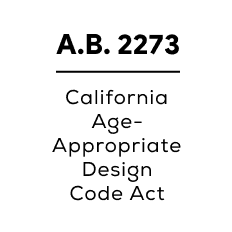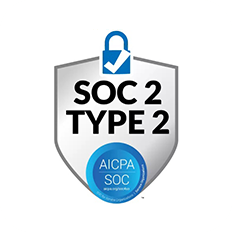Introduction
PrivateID is built for seamless, interoperable identity authentication with complete privacy at its core. Its edge-based architecture and patented tokenization ensure biometric data never leaves the device, enabling scalable, compliant, and frictionless authentication across industries.
Amazon Rekognition, while widely adopted for image and facial recognition across commercial applications, is a cloud-based platform dependent on transmitting and processing biometric images in AWS data centers. This creates privacy risks, compliance challenges, scalability tradeoffs, and higher costs, making it less suited for highly regulated enterprise and consumer identity authentication where privacy and interoperability are essential.
1. Architecture
PrivateID: Performs 1:1 biometric matching directly at the device edge. Biometric data and PII remain securely on the device, preserving privacy while eliminating data breach risks and simplifying global compliance.
Amazon Rekognition: Cloud-based system that requires biometric images or video frames to be transmitted to AWS for analysis, expanding exposure risk and creating dependence on external infrastructure.
2. Privacy & Tokenization
PrivateID: Uses patented Homomorphic Tokenization, transforming biometrics into irreversible, anonymized tokens. Tokens are unique, cannot be reverse-engineered, IEEE 2410 compliant, and exempt from global biometric privacy obligations under GDPR, CCPA, BIPA, and HIPAA. No biometric data or templates are transmitted.
Amazon Rekognition: Processes and stores biometric images in the cloud. Customers are responsible for ensuring compliance, and sensitive data in transit and at rest remains vulnerable to breach and regulatory obligations.
3. 1:1 vs 1:N Matching
PrivateID:
• 1:1: Edge-based, no images or biometric data ever leave the device.
• 1:N: Only anonymized tokens — not images or templates — are transmitted to the server, enabling privacy-preserving, efficient 1:N searches with constant-time lookups (~5ms), regardless of gallery size.
Amazon Rekognition: Both 1:1 and 1:N operations require transmitting biometric images to AWS cloud services. Performance and cost increase with gallery size, and accuracy can degrade as galleries scale.
4. Multi-Modal Biometrics
PrivateID: Supports facial, voice, palm, and fingerprint biometrics combined with Passkeys and additional identity signals (geolocation, Wi-Fi sniffing, device fingerprinting) to enable risk-based authentication from any camera- or microphone-enabled device.
Amazon Rekognition: Primarily supports facial recognition, object, and image analysis. Multi-modal identity authentication capabilities are limited without third-party integrations.
5. Liveness Detection (PAD)
PrivateID: On-device advanced anti-spoofing against photos, masks, screens, and deepfakes, all without transmitting biometric data. Protects privacy and eliminates regulatory and breach risks.
Amazon Rekognition: Liveness detection depends on cloud-side processing, requiring image data transmission, adding latency and increasing compliance exposure.
6. Scalability & Efficiency
PrivateID: Unlimited scalability with consistent performance. A 5MB image is reduced to a ~1KB token, cutting bandwidth and processing costs while delivering constant ~5ms performance across unlimited gallery sizes.
Amazon Rekognition: Scalability depends on AWS compute and storage. Costs and latency rise as gallery size grows, reducing efficiency for high-scale deployments.
7. Accuracy
PrivateID: Achieves 99.999% accuracy across unlimited gallery sizes, with privacy-preserving tokenization preventing bias amplification. (NIST FRVT leader)
Amazon Rekognition: Provides high accuracy for facial recognition, but accuracy decreases at scale and demographic bias concerns have been noted in independent testing. Amazon has not submitted to NIST FRVT for testing.
8. Compliance & Security
PrivateID: Performs biometric processing on-device (1:1) and with homomorphic tokenization (1:N), inherently complying with GDPR, CCPA, HIPAA, and BIPA. Annually certified to IEEE 2410 for biometric processing. No biometric data is ever stored or transmitted.
Amazon Rekognition: Compliance responsibility lies with the customer. Sensitive biometric data is transmitted and processed in AWS cloud infrastructure, creating additional security risks and regulatory obligations.
9. Deployment & Integration
PrivateID: Lightweight SDK/API for rapid deployment across IAM, healthcare, retail, and finance. Runs on general-purpose hardware — desktops, mobile devices, and POS terminals — without requiring cloud dependency.
Amazon Rekognition: Deeply integrated into AWS ecosystem. Deployment depends on AWS cloud infrastructure, creating vendor lock-in and limiting flexibility for hybrid or edge-based environments.
10. Ethics & Trust
PrivateID: Purpose-built for user-consented, privacy-preserving identity verification in enterprise and consumer authentication workflows.
Amazon Rekognition: Designed for commercial image/facial recognition and identity verification. Criticized in some contexts for potential misuse in surveillance, though focus is broader than law enforcement.
11. Cost & Total Cost of Ownership (TCO)
PrivateID: Edge and token-based architecture reduces compute, bandwidth, and storage costs by orders of magnitude. Minimal infrastructure lowers long-term TCO.
Amazon Rekognition: Pay-per-use model scales costs directly with gallery size, data volume, and bandwidth, which can become expensive at scale.
12. Latency & User Experience
PrivateID: Delivers constant ~100ms performance for real-time authentication at any scale, optimized for seamless user experiences.
Amazon Rekognition: Dependent on cloud roundtrips; latency grows with gallery size, network conditions, and cloud processing load, impacting user experience in time-sensitive scenarios.
13. Deployment Flexibility
PrivateID: Fully edge-capable for 1:1, hybrid edge-to-server for 1:N with tokenization. No vendor lock-in; supports cloud, on-prem, and hybrid environments.
Amazon Rekognition: Cloud-native by design, requiring AWS infrastructure. Limited flexibility for edge-only or hybrid deployments.
14. Ecosystem & Interoperability
PrivateID: Standards-based (IEEE 2410, FIDO2) interoperability with IAM, MFA, Passkeys, and RBA solutions across industries.
Amazon Rekognition: Tight integration with AWS services, but limited support for standards-based interoperability outside the AWS ecosystem.
15. Bias & Fairness
PrivateID: Tokenization removes demographic identifiers, reducing the risk of bias and improving fairness across populations.
Amazon Rekognition: Traditional image-based recognition may reflect dataset biases. Independent studies and NIST reports have raised concerns about demographic disparities.
16. Business & Market Positioning
PrivateID: Designed for enterprises, healthcare, finance, and retail requiring privacy-first, compliant, and scalable biometric identity solutions.
Amazon Rekognition: Marketed broadly for developers and enterprises as a cloud-based facial and image recognition service, but less optimized for privacy-sensitive, regulated identity authentication at scale.
Summary
PrivateID provides a privacy-first biometric platform that performs 1:1 matching at the device edge and uses patented homomorphic tokenization for scalable 1:N searches. Biometric data never leaves the device, ensuring constant-time performance, unlimited scalability, multi-modal authentication, built-in compliance, and lower costs.
Amazon Rekognition, by contrast, is a cloud-dependent recognition service that requires transmitting biometric images for processing. While accurate and widely adopted, Rekognition faces latency, compliance, scalability, and cost challenges and locks customers into the AWS ecosystem — making it less suited for regulated, privacy-critical enterprise and consumer identity authentication.














